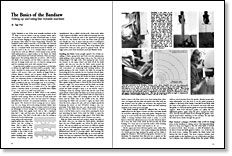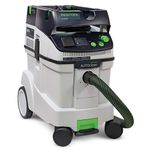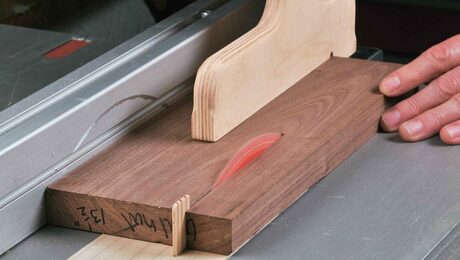The Basics of the Bandsaw
Setting up and using this versatile machine
Synopsis: The bandsaw is one of the most versatile machines in the shop, but it’s best for cutting curves and for resawing wide stock with minimal waste. In this thorough article, Tage Frid explains how to get the best possible cut on your bandsaw by choosing the right blade and installing it properly. He covers basic bandsaw technique and the most common way people are injured while using them, and how to cut several joints on the bandsaw. Side information discusses straight-line cutting and a bandsaw “sawmill.”
The bandsaw is one of the most versatile machines in the shop. It can cut curves, it can rip, crosscut, resaw, and it can cut joints. It can also cut sides of beef with ease, so if you see bits of meat clinging to the wheels in these photographs, it’s because that’s what I’ve been doing lately. However, the bandsaw cannot make as smooth a cut as a table saw, because a table saw has a stiffer, thicker blade that stays straighter in the cut. A bandsaw blade must bend around its wheels, so it can also bend in the cut. It is a welded ribbon of steel. Because the two ends are difficult to weld exactly in line and the weld itself produces a raised surface on the blade, the blade pulses, both forward and back and sideways, when moving at high speed. This pulsing makes the cut uneven. Still, because the depth of cut is greater and the blade is narrower, a bandsaw can do things a table saw can’t. It’s best for cutting curves and for resawing wide stock with minimal waste.
To get the best possible cut on your bandsaw, you first have to choose the right blade and then install it properly. I had a 14-in. bandsaw for many years before getting the 20-in. saw (with a 2-HP motor) I have now. Besides its larger blade-to-column distance (throat) and its greater depth of cut, this larger saw can use a wider blade and run it under greater tension, two important factors in determining how smooth and straight the cut will be. You should always use the widest blade possible for the job. For straight cuts, as in resawing, I use a 1-in. wide blade. For most curve cutting, I use a 3/8-in. wide blade, which will cut to a radius of 1 7/16-in. For tighter curves a narrower blade is necessary; probably three blades (1-in., 3/8-in. and 1/8-in.) will cover most uses.
Another important factor in blade choice is the number and kind of teeth. Bandsaw-blade technology is most developed for metal cutting. There are all sorts of tooth styles and arrangements of tooth set, each one best suited for cutting a particular kind of metal, of a particular thickness, at a particular speed. The choices for wood cutting are not so numerous. For one thing, all wood-cutting bandsaw blades have every tooth set alternately; raker (or unset) teeth do not have an advantage in wood cutting. For a long time wood-cutting bandsaw blades had regular teeth, that is, like a handsaw, they had 0° rake and they were the same size as the gullets between them.
From Fine Woodworking #27
For the full article, download the PDF below:
Fine Woodworking Recommended Products

Festool Cleantec CT 26 E HEPA Dust Extractor

Starrett 12-in. combination square

Stanley Powerlock 16-ft. tape measure




















Log in or create an account to post a comment.
Sign up Log in